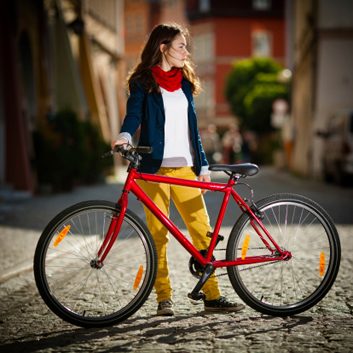
The basics of buying a bike
It may be tempting to go out and buy the first bike that catches your eye, but there are some important basics to be aware of before you do. Given the wide variety of bikes out there, you need to narrow down the type that’s going to fit your lifestyle.
“The first thing I would recommend is to find the right bike store,” says Rob White, sales manager at Outdoor Gear Canada in Montreal. “It should be close to where you live and a place that makes you feel comfortable.”
This is important because it’s where you’ll go for all your bike-related questions. If it’s not a good store, you could get bad advice, or worse – end up with the wrong bike.
How will you know it’s a good place?
“Before they start recommending a bike, they should ask what you’re going to use the bike for,” says White.
Ready to find your perfect bike? First, get an idea of what you’re looking for with these bikes that suit different needs.
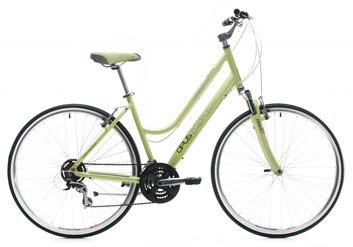
Leisurely weekend riding
If you’re only interested in riding your bike in your spare time and never in anything but beautiful weather, the most important thing (besides style) is comfort.
In this case, “a bicycle is more of a fashion object,” says White. “I would recommend a more upright urban comfort bike.”
“A lighter-weight style is best if you’re not going to use it often,” he says. Another important thing to note: “You don’t need to add fenders if you won’t ride it in the rain.”
The Urbano Women’s Urban Comfort bike from Opus (pictured) is a good example of a bike that would be perfect for those who love leisurely rides. It has a comfortable saddle, is in an upright position and is made of lightweight aluminum – plus, it’s pretty!
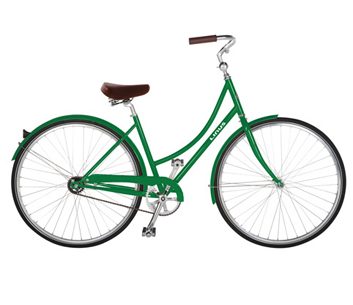
Short commutes and running errands
Want a bike you can use every day?
If your office is less then 10 kilometres from your house, and you plan to load up your basket at your favourite farmers’ market on the way home, the best bike for you is a city, or commuter, bicycle.
This type of bike is more about function than fashion. “A person may not care about how it looks,” says White. They just want to use it to get around and run day-to-day errands.
“What you have to decide in this case is how you will carry things: a rear rack or a front basket,” says White.
Since you’ll probably be riding in the rain some days, you’ll also need fenders.
“It’s good to ask if you can mount fenders and a rack on a commuter bike before you buy it,” he says.
Another important thing to note: “The lower the centre of gravity of the weight you’re carrying, the better.” White recommends Pannier bags, which attach to the sides of a bike and keep the centre of gravity low.
The Dutchi 1 Bike from Linus Bikes (pictured) is a great example of a classic commuter and city bike. It comes with painted steel fenders and can be fitted with both a rear rack and front basket.
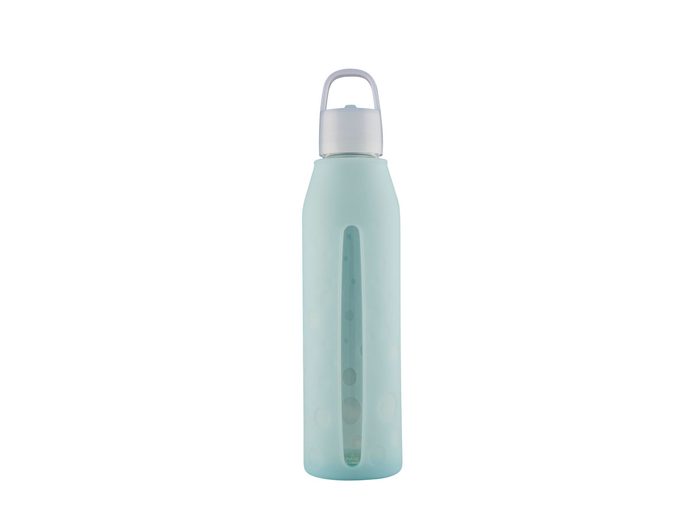
Racing
If you want to go fast, or you’re planning to use your bike to enter into competitive races or charity rides, then you’ll want a road bike.
“Having the advice of a good bike store is really important when buying a road bike,” says White, since the prices and styles vary depending on what it will be used for. “Some people might be interested in a road bike for personal use, others might be interested in elite cycling,” he says.
Either way, road bikes have certain things in common.
“You can tell you’re looking at a road bike when it has a drop bar and narrow tires, which make it go faster,” says Hannah Parish, marketing manager for Specialized Canada.
The S-Works AMIRA SL4 from Specialized (pictured) is the bike of choice for Team Specialized Lululemon. It has a lightweight frame, is quick to react and provides precise steering and handling. Specialized Lululemon team member Evelyn Stevens even describes it as having the ability to “make you feel like you’re a better rider.”
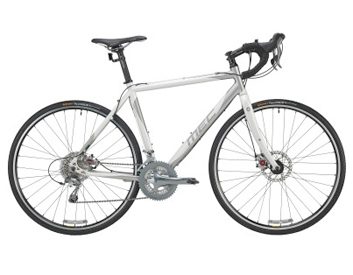
Longer commutes on assorted terrain
Road bikes aren’t just for racing. If you’re planning to commute more than 10 kilometres and want to go faster than you could with a city bike, there are two types of road bikes that could do the trick.
“If you’re commuting 10 kilometres or more, I recommend a touring or cyclo-cross bike,” says White.
“Touring bikes are often made of steel, are more comfortable and have mounts for fenders and racks, which are good for commuting,” says White. They also have drop handlebars and thinner tires for speed, making them a great option for those with longer commutes who are staying on roads and smoother surfaces.
However, if you have a longer commute that involves some dirt trails, consider a cyclo-cross bike.
“Cyclo-cross is a road biking sport that essentially involves riding road bikes in dirt,” says White. “The bikes are perfect for the road. You can also put fatter tires and more powerful breaks on them,” making them more stable if your route takes you off the road.
The Côte Bicycle from Mountain Equipment Co-op is great for longer commutes in both urban settings and on gravel or dirt roads. It’s also easy to attach racks and fenders, making it a good option for those with baggage.
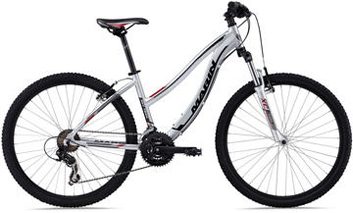
Hitting the trails
If the type of biking that interests you involves bumps, hills and other miscellaneous terrain, you’ll need a mountain bike.
Mountain bikes generally have thick, sturdy frames, thick wheels (at least 26 inches) and straight handlebars. These bikes also vary depending on what you’re using them for.
“For entry-level mountain biking, I would suggest a hard-tail bike with front suspension,” says White.
If you’re planning to skip the hills and focus more on faster cross-country riding on easier trails, White suggests choosing a bike with thicker 29-inch wheels.
The 2013 Marin Women’s Sky Trail Step-Through bike is a great example of a lightweight mountain bike that has multi-surface tires, so you can hit the trails without worrying about what terrain you’ll encounter.
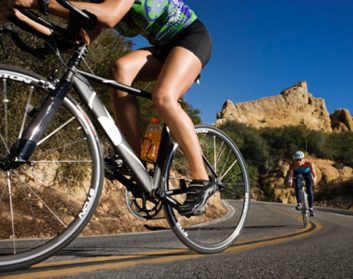
Making sure your bike fits
After you’ve found the perfect bike for your lifestyle, you might be tempted to (literally) ride off into the sunset with it. But first, you’ll need to make adjustments depending on your body physiology.
We talked to Andrew McGregor, certified Body Geometry Fit instructor for Specialized Bikes, about getting your bike fitted so you’re as comfortable as possible.
The idea behind Body Geometry Fit is “putting someone in a neutral position so they’re not in pain while riding their bike,” says McGregor.
“We want to make sure your bike riding doesn’t hurt. It could be as simple as changing your saddle because you’ve got saddle pain, or it could be figuring out what’s causing knee, neck or shoulder pain,” he says.
After all, you don’t want to find the perfect bike and then not even want to ride it because you’re in pain. “Getting fitted can prevent pain that stops you from going out on your bike,” says McGregor.
Ready to go bike shopping?
Just remember to “find the right bike store, make sure the bike fits you perfectly and buy a bike that you love,” says White. “Do those three things, and you’ll get a bike that’s perfect for you.”
Related:
• Two styles of cycling to try
• The benefits of biking
• How to make biking more comfortable
